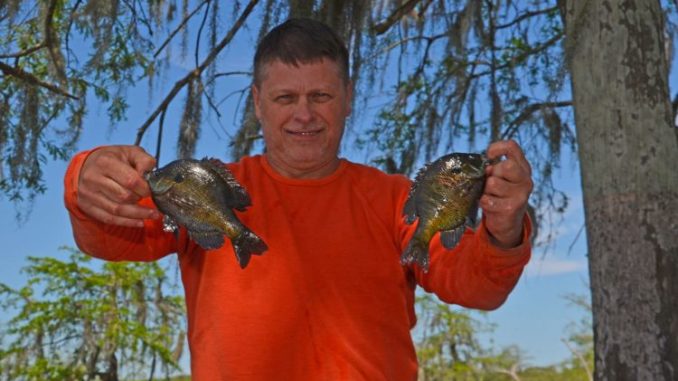
As lakes go, Lake Martin isn’t a big one, covering only 800 acres. What is called the lake today was formed in 1952 by the building of a ring levee around a low cypress swamp. The entire margin of the lake, 580 acres, is flooded timber.
The 200 acres of water in the lake’s center is 5 feet deep at the tree line. The area of flooded cypresses is shallower except for a borrow canal around the edge of the lake, which can be as deep as 12 feet in spots and very shallow in others.
Dense growths of submerged water plants occur in Lake Martin, dominated by hydrilla and coontail. Interestingly, biologists have determined that the feces of the huge bird population of the lake, one of its claims to fame, has in the past been responsible for providing the fertilizer that triggered plant growths and actually caused some fish kills.
The Louisiana Department of Wildlife and Fisheries (LDWF) has battled the submerged vegetation using chemicals, sterile grass carp stocking and modest water level drawdowns.
Since the 1990s, LDWF has sporadically stocked the lake with Florida largemouth bass and some channel catfish. An analysis done in 2009 showed 16 percent of the lake’s bass were pure Florida bass or their hybrids,
Lake Martin is an excellent bream lake. An LDWF creel survey showed 85 percent of the fish taken by fisherman from the lake were bream species, primarily bluegill.
Road access to the lake and its boat launch is by Lake Martin Road from Highway 31 from the east, and Highway 353 (Cypress Island Road) from the west.